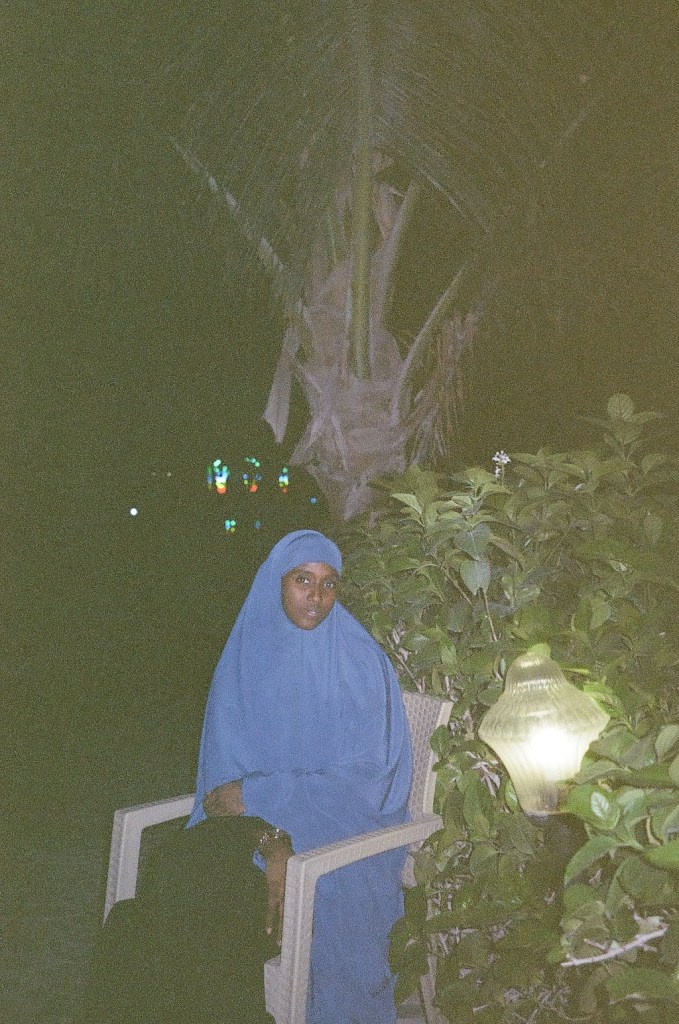Dedicated photography enthusiasts remain attached to traditional film cameras, and this is not said to spark a sudden debate about film versus digital, by now we get it, but the beauty of film photography is that first impression aren’t always accurate, but in that first moment, the feeling one experiences seem more real than anything that comes after. Those tiny technical flaws in film result in astonishing and charming effects that can only be achieved with edited filters, the gritty surface, or even a dreamy smoothness. This is why there is no surprise that budding photographers tend to lean towards it as opposed to digital. In conversation with Halima Abukar, who is more a writer than a photographer, she has expressed how she painstakingly used a film camera for the first time in a space she was seeing for the first time, taking us on a photographic journey through Somalia and Mombasa. And just like Malick Sidibe said: “My Photographs are a kind of tourism because it’s as if you’re travelling to Mali when you see them.”

Hello Halima and welcome to Random Photo Journal! Briefly introduce yourself, What do you do and what got you started on your photography journey?
I am a Muslim, Somali-American woman born and raised in Rochester, NY. I am a recent college graduate from Howard University, and I miss being an academic. I love my family, my books, and I love to write. After toiling in May about whether or not to go to Somalia for the summer, my dad told me a week prior, the last week of May, that he decided to cut our tickets without any of my input. I was happy and nervous. I asked my cousin what kind of film camera he used and ordered one immediately off of eBay. I felt that I needed to document the trip as I knew it would be very precious to me, more precious than most other trips I’ve been on, and I felt that my phone wouldn’t suffice.

Why did you decide to document Kenya and Somalia?

Kenya and Somalia were always some distant vestiges of my memory that were never really mine, and so I knew that it would fascinate, mystify and scare me. I was worried about sobbing uncontrollably in front of people whom I was supposed to know my whole life, people that I was supposed to grow up with and around. I never did cry, but the fear that I would have was enough to let me know that I needed to pay attention.
What message would you like to get across to the general public with your work?
I think the main message I want people to know is that even the most inexpressible tender moments could be and ARE palpable.

How long have you been documenting?
If by document, you mean how long I’ve been a person then I’ve been documenting my whole life. In terms of photography, I’ve only documented with intent just this past year. I started with big events like Eid, or days during Ramadan. It was never casual, only special moments. On my phone, it is everything and nothing and it is fulfilling… but with film, it feels intentional, and special, even if it’s not special at all.
Are there photographers whose work you enjoy?
The main photographer that I go back to and look at often is Malick Sidibe. But looking at general African portraiture, even Somali studio photographers invest in that style of portraiture. I like the poise and elegance it has, and how it can encapsulate calculated moments. My parents’ photos after being married are to the likes of Malick, which makes me realize most portraits are my favourite. My other inspirations are my friends, who endlessly toil with cameras, film, photography and styling, therefore indirectly influencing me to indulge as well.
In your opinion, what makes a good photograph?
A good photograph is simply beautiful.


Do you have any upcoming projects that you will like everyone to know about or show us where to find more of your work?
You can follow me on Instagram, where I am either serious or unserious in my photos.















